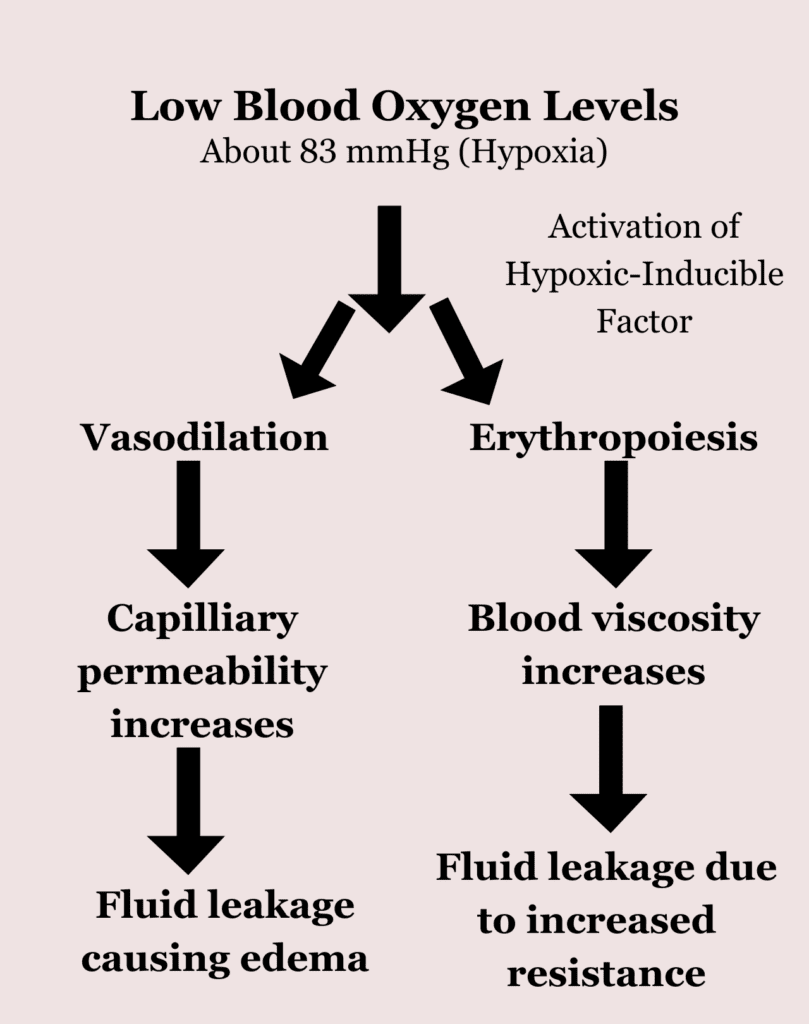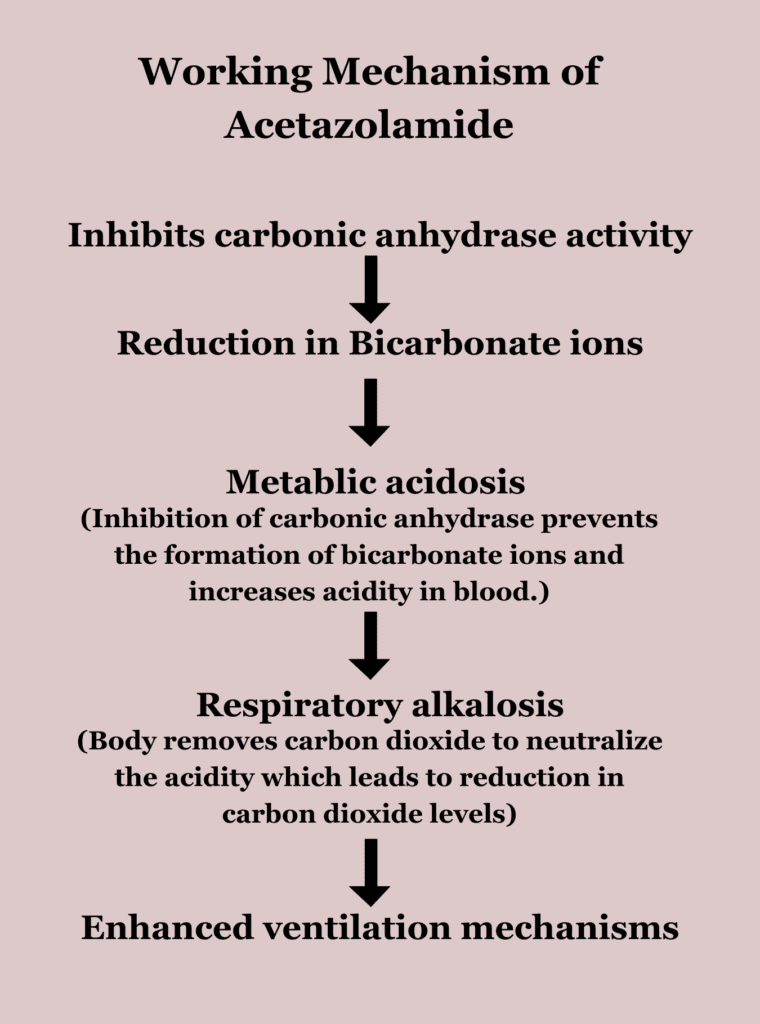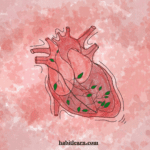What is High Altitude Sickness?
High altitude sickness is our body’s typical response to high altitudes (usually above 2500 meters or 8200 feet heights). Declining oxygen concentration in the atmosphere at high altitudes causes a reduction in the partial pressure of oxygen (PO2). Low oxygen levels in our blood spur the cascade of physiological events. These physiological events try their best to acclimatize the body naturally. However, such a cascade sometimes worsens the situation and provokes Acute Mountain Sickness (AMS).
Acute Mountain Sickness is a mild form of sickness that mainly occurs due to low oxygen levels at high altitudes. Acute mountain sickness has mild symptoms and can be treated with proper hydration, rest, and a balanced diet. Sometimes, this situation remains unchecked and gives rise to more severe forms of Acute mountain sickness; High Altitude Pulmonary Edema (HAPE) and High Altitude Cerebral Edema (HACE). HAPE and HACE are the worsened forms of acute mountain sickness. HAPE is the fluid accumulation in the lungs, likewise, HACE corresponds to the fluid accumulation in the brain.
Acute Mountain Sickness (AMS)
Acute Mountain Sickness is a mild form of sickness that can be treated through moderate treatment. If it remains untreated or unaffected by the treatment, it leads to the advanced stages. Every individual has different criteria to deal with AMS. Genetic predisposition and the body’s adaptive character play a decisive role in high-altitude sickness. Most individuals do not advance to HAPE/HACE. HAPE and HACE are the critical stages and require treatment. If acute mountain sickness is not getting better, the person should be descended to lower heights. Common symptoms of acute mountain sickness are :
- Nausea
- Vomiting
- Headache
- Dizziness
- Fatigue
- Insomnia
- Shortness of breath
What Physiological Changes Occur in Our Body at High Altitudes?
Our body responds to the high altitude by the following progression of events;
Hypoxia
The partial pressure of oxygen (PO2) at sea level is 100 mmHg whereas the partial pressure of oxygen (PO2) at high altitudes is 83 mmHg. Low oxygen levels are the chief cause of high altitude sickness. It gives rise to a series of events in the body as a response Less oxygen levels in our body(hypoxia) give rise to an array of events. Receptors in blood vessels can sense low oxygen concentration in blood, provoking the necessary mechanisms. Activation of the Hypoxic-Inducible Factor (HIF) is one such mechanism.
HIF is a transcription factor that works as a molecular switch for the genes that control the adaptive responses to hypoxia. This activation stimulates the production of red blood cells (erythropoiesis) and the formation of blood vessels (angiogenesis). Hypoxic conditions also give rise to congestion in blood arteries.
Vasodilation
Cells in the inner walls of blood vessels, especially endothelial cells can detect low oxygen levels (hypoxia). This, in turn, secretes nitric oxide into the cellular space of endothelial cells. Nitric oxide plays a key role in dilating the blood vessels (vasodilation). Vasodilation is an excellent adaptive strategy to hypoxia as it increases the blood flow and ultimately increases the oxygen supply to tissues.
Fluid leakage
Although vasodilation proves a good adaptive response at first, it can increase the membrane permeability of blood vessels. Capillaries have thin walls and increased permeability of capillary walls directs the discharge of fluid, proteins, and other substances into the interstitial space. Fluid discharge leads to its accumulation in the intercellular spaces, causing edema. Edema is defined as the fluid buildup in the extracellular spaces that causes swelling and tenderness. If this condition remains, then it leads to HAPE/HACE.
Red Blood Cell Production
Besides vasodilation, our body stimulates the formation of red blood cells, as a response to hypoxia. Kidneys release Erythropoietin factor (EPO) into the bloodstream. EPO spurs the formation of red blood cells in the bone marrow. Increased red blood cells can enhance the oxygen-carrying capacity of blood. Red blood cell production is the body’s response to chronic hypoxia. The rise in red blood cells in the bloodstream increases the viscosity(thickness) of blood and makes it more dense. When this dense blood passes through the blood vessels, it imposes pressure on the walls. Like vasodilation, this condition also results in edema due to high resistance in blood vessels. Lack of EPO production in the body due to damage to the EPO producing cells can result in severe anemia. In such cases, erythropoietin stimulating agents (ESAs) therapy works best.

Medication for High-Altitude Sickness
Some medications can be taken on a preventive basis like Acetazolamide (Diamox). Acetazolamide improves the ventilation system and avoids fluid retention in the lungs and other parts of the body. It makes the body acclimatized for high altitudes. Ibuprofen is a pain reliever and can be taken for headaches and throbbing sensations. Dexamethasone is taken in severe conditions to reduce inflammation. Tadalafil is a medicine that promotes vasodilation and reduces blood pressure in pulmonary arteries.
Working Mechanism of Acetazolamide
Acetazolamide works by inhibiting carbonic anhydrase. Carbonic anhydrase is an enzyme that catalyzes the conversion of carbon dioxide and water into bicarbonate ions and hydrogen ions. Inhibition of carbonic anhydrase checks the formation of bicarbonate ions. Acetazolamide acts mainly on renal tubules, preventing the formation of bicarbonate ions and at the same time, reducing their reabsorption from kidney tubules. It gives rise to mild metabolic acidosis due to a decrease in bicarbonate ions concentration in the blood. Metabolic acidosis is a medical condition that arises due to a slight increase in acidity.
To counter metabolic acidosis, the body promotes ventilating systems to remove carbon dioxide from blood (carbon dioxide and water form carbonic acid which, in turn, breaks into bicarbonate and hydrogen ions). This condition leads to respiratory alkalosis when carbon dioxide levels decline beyond the range. To compensate for carbon dioxide, the body further promotes the ventilation mechanisms. This adaptive strategy proves effective for breathing in low oxygen levels at high altitudes.
Acetazolamide also reduces the reabsorption of bicarbonate ions. It has a diuretic effect (increased urine production). Excessive urine leads to dehydration and activates the ventilation system. Increased urine production prevents fluid accumulation in the lungs, brain, and other body parts, preventing HAPE and HACE.

Concluding High Altitude Sickness
Dealing with altitude sickness varies from person to person. It depends upon the body’s responsive mechanisms, genetic factors, and acclimatization procedures. Most individuals do not develop advanced forms of acute mountain sickness; HAPE and HACE. Acute mountain sickness is a mild form of a body’s reaction and requires corresponding treatment. If acclimatization procedures or medications are not proving helpful, it is advisable to seek professional medical assistance and descend to the lower heights. High Altitude Fitness strategies introduce us to optimal acclimatization procedures to avoid afflictions at high altitudes.




